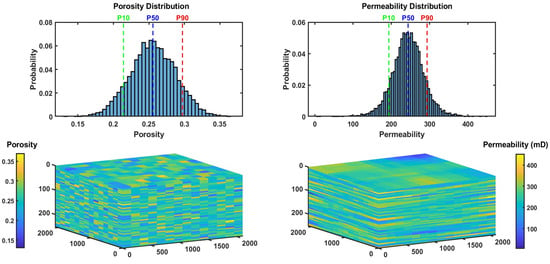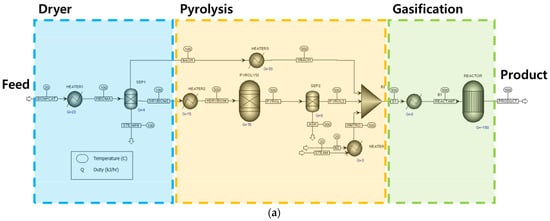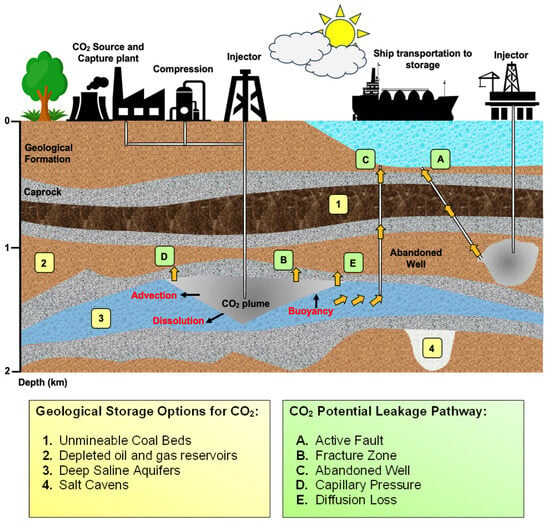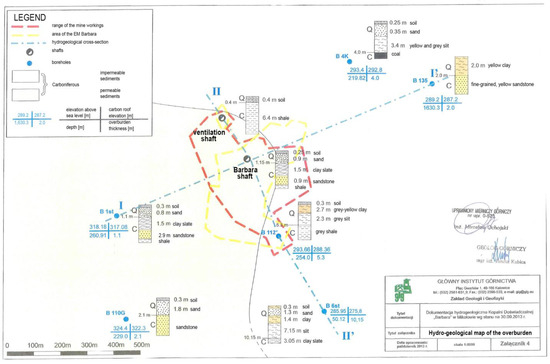Feature Papers in Carbon Capture, Utilization, and Storage
A topical collection in Energies (ISSN 1996-1073). This collection belongs to the section "B3: Carbon Emission and Utilization".
Viewed by 13689Editors
Interests: carbon capture, utilization and storage; enhanced oil recovery
Interests: reactive transport modeling; geologic carbon dioxide sequestration; natural gas hydrate accumulation
Special Issues, Collections and Topics in MDPI journals
Interests: CO2 storage; wellbore cement; risk assessment; reactive transport
Special Issues, Collections and Topics in MDPI journals
Interests: carbon capture and storage; multiphase multi-component and turbulence flow; computational fluid dynamics; lattice boltzmann method (LBM); high-performance computing (GPU computing); rock physics
Topical Collection Information
Dear Colleagues,
Carbon capture, utilization, and storage (CCUS) is a promising way to mitigate CO2 emissions from centralized sources (e.g., power generation and industrial facilities), or directly from the atmosphere. Due to the accelerated pace of industrialization and the aggravation of global warming, more and more countries have attached importance to CO2 capture projects. The earliest large-scale CCUS project is the Terrel project implemented in the United States in 1972. The United States, Canada, Australia, Japan, and the United Arab Emirates have accelerated the industrialization of CO2 capture projects. There are many sources of CO2 emissions in modern industrial production, such as cement, iron and steel, electric power, coal chemical and refining plants, etc. In view of CO2 emissions, various industries have carried out important research centered around CO2 capture, utilization, and storage. According to the characteristics of each industry, a variety of technologies and methods for CO2 capture, utilization, and storage have been formed. In order to exchange recent advances and lessons learned nationally and internationally, and to explore scientific and technological issues related to CCUS breakthrough, Energies plans to publish a collection on “Carbon Capture, Utilization, and Storage (CCUS)”. This Topical Collection aims to present and disseminate the most recent advances related to science and technologies related to CO2 capture, utilization, and storage.
Interested topics include but not limited to: (1) thermal–hydrological–mechanical–chemical (THMC) coupling processes in CCUS; (2) numerical modelling and simulation; (3) containment and environmental impact; (4) regulatory framework, financing, economical, and social issues related to CCUS; (5) subsurface flow and transport; (6) pore-scale modelling of CCUS; (7) computational methods for flow in porous media; and (8) CO2 separation systems
Dr. Qi Liu
Dr. Hailong Tian
Prof. Dr. Liwei Zhang
Dr. Fei Jiang
Dr. Zhijie Yang
Collection Editors
Manuscript Submission Information
Manuscripts should be submitted online at www.mdpi.com by registering and logging in to this website. Once you are registered, click here to go to the submission form. Manuscripts can be submitted until the deadline. All submissions that pass pre-check are peer-reviewed. Accepted papers will be published continuously in the journal (as soon as accepted) and will be listed together on the collection website. Research articles, review articles as well as short communications are invited. For planned papers, a title and short abstract (about 100 words) can be sent to the Editorial Office for announcement on this website.
Submitted manuscripts should not have been published previously, nor be under consideration for publication elsewhere (except conference proceedings papers). All manuscripts are thoroughly refereed through a single-blind peer-review process. A guide for authors and other relevant information for submission of manuscripts is available on the Instructions for Authors page. Energies is an international peer-reviewed open access semimonthly journal published by MDPI.
Please visit the Instructions for Authors page before submitting a manuscript. The Article Processing Charge (APC) for publication in this open access journal is 2600 CHF (Swiss Francs). Submitted papers should be well formatted and use good English. Authors may use MDPI's English editing service prior to publication or during author revisions.
Keywords
- carbon capture, utilization, and storage (CCUS)
- CO2 geological storage (CGS)
- CO2-enhanced oil recovery (CO2-EOR)
- flow and transport in porous systems
- pore-scale modelling of CCUS




















